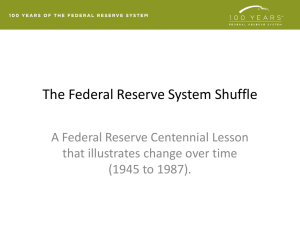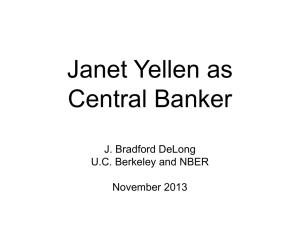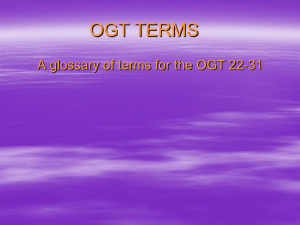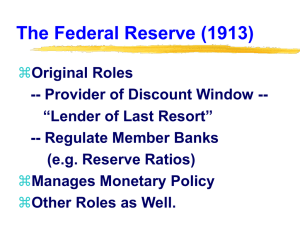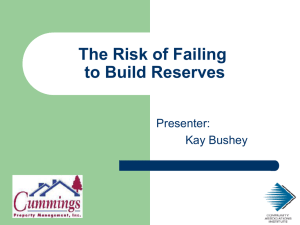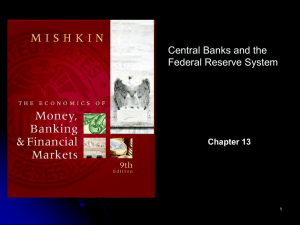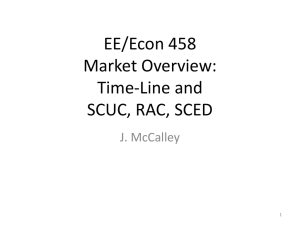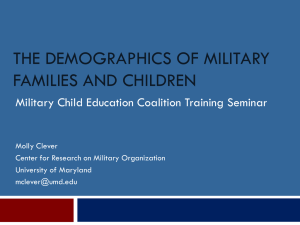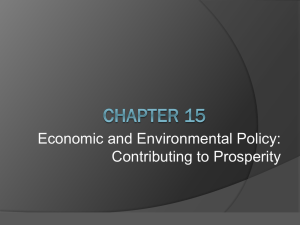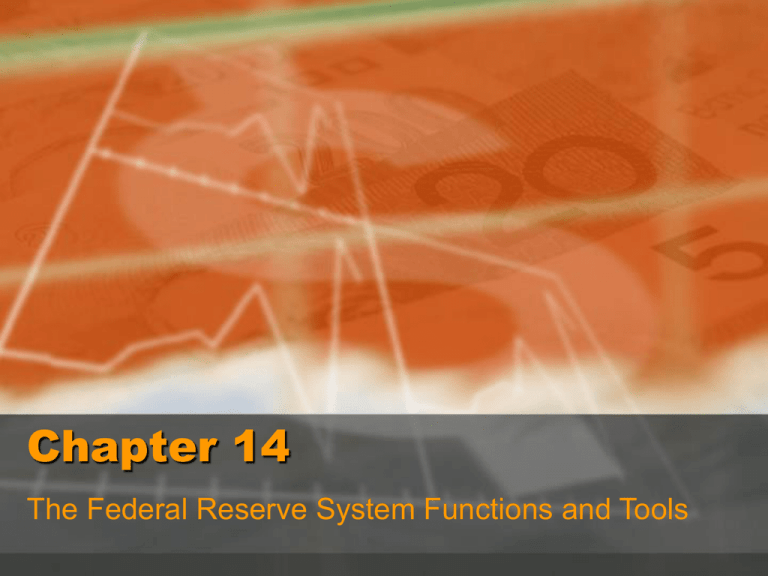
Chapter 14
The Federal Reserve System Functions and Tools
Chapter Objectives
• The organization of the Federal
Reserve System
• Reserve requirements
• The deposit expansion multiplier
• The tools of monetary policy
• The Feds effectiveness in fighting
inflation and recession
• The Banking Act of 1980
Copyright 2002 by The McGraw-Hill Companies, Inc. All rights reserved.
14-2
The Federal Reserve
A central bank is an institution that oversees and
regulates the banking system and controls the monetary
base.
The Federal Reserve is a central bank—an institution
that oversees and regulates the banking system, and
controls the monetary base.
The Federal Reserve system consists of the Board of
Governors in Washington, D.C., plus regional Federal
Reserve Banks, each serving its district; of the 12
Federal Reserve districts:
The Federal Reserve System
• The Federal Reserve Act of 1913 created the
Federal Reserve System
– To provide for the establishment of Federal reserve
banks, to furnish an elastic currency, to afford
means of rediscounting commercial paper, to
establish a more effective supervision of banking in
the United States, and for other purposes
– First United States Bank [ 1791 - 1811]
– Second United States Bank [ 1816 - 1836]
• The charters of both were allowed to lapse
– The 1907 bank crises caused the public to demand
the government do something to keep this from
happening again
Copyright 2002 by The McGraw-Hill Companies, Inc. All rights reserved.
14-3
The Federal Reserve System
• The Federal Reserve has five main jobs
– Conduct monetary policy which is, by
far, the most important job
• Monetary policy is the control of the rate of
growth of the money supply to foster relatively
full employment, price stability, and a
satisfactory rate of economic growth
– Serve as lender of last resort to
commercial banks, savings banks,
savings and loan associations, and
credit unions
Copyright 2002 by The McGraw-Hill Companies, Inc. All rights reserved.
14-4
The Federal Reserve System
– Issue currency
– Provide banking services to the
U.S. government
– Supervise and regulate our
financial institutions
Copyright 2002 by The McGraw-Hill Companies, Inc. All rights reserved.
14-5
The Federal Reserve District
Banks
• Each Federal Reserve District Bank is
owned by the several hundred member
banks in that district
– A commercial bank becomes a member
by buying stock in the Federal Reserve
District Bank
– So, the Fed is a quasi public-private
enterprise, not controlled by the president
or Congress
• Effective control is really exercised by the
Federal Reserve Board of Governors in
Washington, D.C.
Copyright 2002 by The McGraw-Hill Companies, Inc. All rights reserved.
14-6
The Federal Reserve System
• Board of Governors
– 7 appointed members
– Appointed by President
– Confirmed by Senate
• Sets reserve requirements
• Supervises & regulates
member banks
• Establishes and
administers regulations
• Oversees Federal Reserve
Banks
• 12 District Banks
• Propose discount rates
• Hold reserve balances
for member institutions
• Lends reserves
• Furnish currency
• Collects & clears checks
• Handle U.S. government
debt & cash balances
Federal Open Market Committee (Board of Governors plus 5 Reserve
Bank Presidents. This committee directs open market operations which
is the primary instrument of monetary policy
14-7
The Federal Reserve System
Federal Reserve Districts are shaded.
Board of Governors of the Federal Reserve System
Federal Reserve Bank cities
Federal Reserve Branch cities
Boundaries of Federal Reserve Branch territories
12
Alaska
Seattle
1
9
Helena
Portland
Buf falo
2
Boston
Minneapolis
7
12
Chicago
Detroit
3
Cleveland
Omaha
Salt
Lake
City
San
Francisco
Kansas
10
Richmond
5
Charlotte
Nashville
Oklahoma
City
El
Paso
Little
Rock
Atlanta
Birmingham
Dallas
San
Antonio
Baltimore
Washington
St.
Louis
8
11
New York
Philadelphia
4
Denver
Los
Angeles
Pittsburgh
6
Jacksonville
Houston
New Orleans
12
Hawaii
Copyright 2002 by The McGraw-Hill Companies, Inc. All rights reserved.
Miami
14-8
The Federal Reserve System



